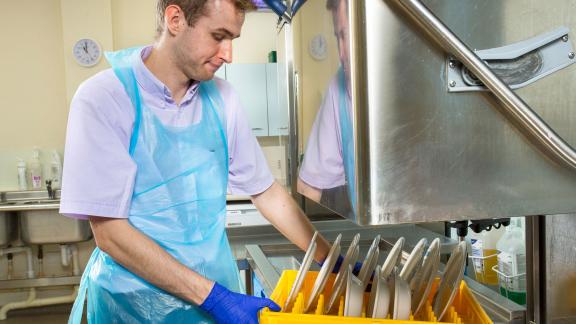
Introduction
Approximately 60-80 per cent of health and wellbeing is attributable to the social determinants of health. Employment is one of the key determinants. There is an inherent and reciprocal link between health and work. Being in good work with fair pay and conditions improves people’s overall physical and mental health and supports quality of life; good health enables people to work, creating a virtuous cycle.
Through inclusive employment and by targeting activities, the NHS can have a significant impact on enhancing the lives of people experiencing deprivation and inequalities, support economic and social recovery and levelling up. We can actively offer pathways into NHS careers and ensure apprenticeships and pre-employment opportunities are open to people:
- experiencing poverty or deprivation
- with a physical or learning disability and/or autism
- with a long-term condition or mental health condition
- that are care leavers
- that are experiencing homelessness
- that are in, or have left the criminal justice system
- are from an ethnic minority group
- have recently been made unemployed.
Inclusive employment that helps to tackle health inequalities can be achieved by:
- optimising the role of the NHS as an anchor
- addressing our workforce challenges while tackling inequalities
- engaging with local partners
- learning from COVID-19 workforce practices.
Optimising the role of the NHS as an anchor
Anchor institutions are large organisations which are ‘anchored’ in place, meaning they are unlikely to relocate and are rooted in and connected to their local communities.
Anchors can intentionally use their assets, resources and influence to support their local community’s health and wellbeing and tackle heath inequalities by creating new opportunities for local people to enter employment for example. Across the country, we are seeing the emergence of place-based anchor systems or networks, involving a range of NHS and non-NHS partners.
What you can do
- Develop a strategic approach with clear ambitions of what you are trying to achieve and for which population groups.
- Seek opportunities to collaborate with other local organisations who are already providing support to your target groups as they will have complimentary skills or expertise, for example, local authorities, organisations in the voluntary or education sector.
- Engage with communities and other key stakeholders to co-design your approach.
- Join the Health Anchors Learning Network to share and develop innovative ideas and practices. It is a free network for people responsible for or interested in anchor approaches to health.
- Measure the difference you are making.
Addressing our workforce challenges while tackling inequalities
Health and care workforce
There were over 110,000 vacancies in England and 105,000 vacancies in adult social care.
|
NHS workforce |
Adult social care workforce |
|
|
What you can do
- What does your current workforce profile look like in comparison to your local community?
- Is your workforce representative of your local community?
- If not, where are the gaps? And how do these split across roles, specialties, and grades?
- Who else can you partner with locally to work at scale and utilise others’ expertise and support to reach and diversify your workforce?
- Enabling your existing staff to become NHS Ambassadors, will connect your organisation with future generations and encourage them to consider a career in healthcare.
- Work with local partners to promote and develop career pathways and apprenticeship routes.
- What’s your long-term workforce plan and how will this work support your ambitions? Review plans with regional and system people boards to align with national policy.
Engaging with local partners
With hundreds of roles across the NHS and social care, you may want to consider how you engage with local partners including other health and care partners, local councils and the voluntary and education sector to promote roles and facilitate career pathways to local people of all ages, and people who experience health inequalities.
What you can do
- Where are you now and where do you want to be? Use your data to develop a case to sustain and grow activity.
- What resources are needed and where can working collaboratively across your system maximise impact and scale from any investment?
- Develop relationships with education providers to influence the skills agenda locally and ensure visibility as a good and stable employer within the local community.
Learning from COVID-19 workforce practices
COVID-19 has resulted in more agile and flexible working practices across the health and care workforce and has reduced bureaucracy, particularly during the mass vaccination recruitment drive.
This has opened new workforce supply pipelines to local people who may not have previously considered a role in the health sector and connected the workforce to the community it serves.
It has also provided an opportunity to promote the wide range of careers available within the NHS to local people with transferrable skills who are unaware of the full range of roles available.
What you can do
- Promote health and care as an attractive and accessible sector for local talent either starting out on their journey or for those with transferrable skills to access a wide variety of career opportunities.
- Continue working in an agile way, learning from the best of people practices that we saw during the acute phases of the pandemic.
- Ensure that people who have joined the NHS to support the pandemic, for example, into vaccination centres, are encouraged and supported to develop their career in the NHS.


